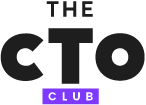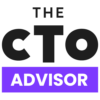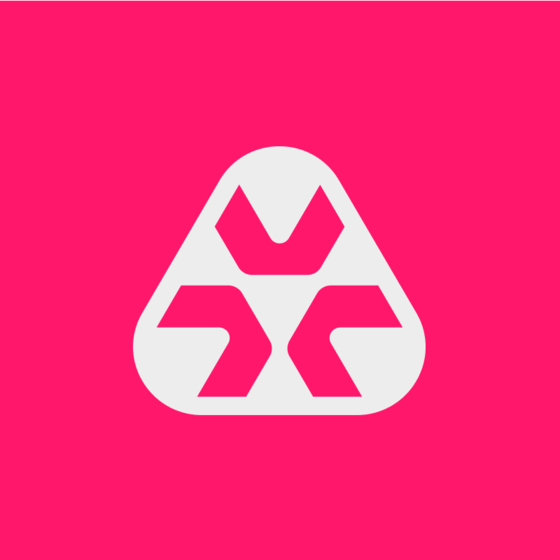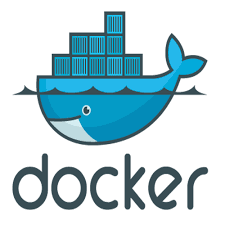Best ConnectWise Alternatives Shortlist
Here’s my shortlist of the best ConnectWise alternatives:
Our one-on-one guidance will help you find the perfect fit.
As an IT professional, I understand the need for comprehensive solutions that can handle the diverse requirements of the work. Tools like ConnectWise are a staple for many IT teams, offering a broad range of features from scripting to messaging, all bundled into a web-based platform accessible from desktop and mobile apps. But while ConnectWise can be an asset, there might be better fits for some teams or use cases.
I think it’s vital that you explore alternatives to ConnectWise that align more closely with your team's specific needs. Seek tools with easy integration, superior remote support, and user-friendly interfaces. Identifying the best fit for your team is essential to enhancing your IT management experience.
What Is ConnectWise?
ConnectWise is an IT management platform that helps businesses deliver and support technology services. It's mostly used by MSPs, IT service providers, and internal IT teams to stay on top of tickets, assets, and client systems. Remote access, automation tools, and reporting features help with managing devices, resolving issues faster, and keeping things organized. Overall, ConnectWise makes it easier for your team to stay productive and deliver reliable support.
Why Trust Our Software Reviews
We’ve been testing and reviewing SaaS development software since 2023. As tech experts ourselves, we know how critical and difficult it is to make the right decision when selecting software. We invest in deep research to help our audience make better software purchasing decisions.
We’ve tested more than 2,000 tools for different SaaS development use cases and written over 1,000 comprehensive software reviews. Learn how we stay transparent & check out our software review methodology.
Best ConnectWise Alternatives Summary
This comparison chart summarizes pricing details for my top ConnectWise alternative selections to help you find the best one for your budget and business needs.
| Tool | Best For | Trial Info | Price | ||
|---|---|---|---|---|---|
| 1 | Best for complete IT business management | 30 days free trial | From £30/user/month | Website | |
| 2 | Best for unified endpoint management and security | Not available | Website | ||
| 3 | Best for AI-powered endpoint optimization | No | Pricing upon request | Website | |
| 4 | Best for scalable IT service management for MSPs | No | $15/user/month (billed annually) | Website | |
| 5 | Best for cloud-based mobile and desktop management | 30-day free trial | From $6/user/month (billed annually) | Website | |
| 6 | Best for integrated endpoint security and management | No | Pricing upon request | Website | |
| 7 | Best for comprehensive IT asset management | Not available | Website | ||
| 8 | Best for AI-driven IT service management | Not available | Pricing upon request. | Website | |
| 9 | Best for small business repair shop automation | No | $49.99/user/month (billed annually) | Website | |
| 10 | Best for remote endpoint management | Free trial available | From $149/technician/month (billed annually) | Website |
-

Docker
Visit WebsiteThis is an aggregated rating for this tool including ratings from Crozdesk users and ratings from other sites.4.6 -

Pulumi
Visit WebsiteThis is an aggregated rating for this tool including ratings from Crozdesk users and ratings from other sites.4.8 -

GitHub Actions
Visit Website
Best ConnectWise Alternatives Reviews
Below are my detailed summaries of the best ConnectWise alternatives that made it onto my shortlist. My reviews offer a detailed look at the key features, pros & cons, integrations, and ideal use cases of each tool to help you find the best one for you.
HaloPSA is a professional service automation solution that serves as an all-in-one platform for managing all aspects of an IT business. It caters to the needs of IT service businesses by providing comprehensive IT management capabilities.
Pros and cons
Pros:
- Robust customer service
- Wide range of integrations
- Comprehensive set of IT business management tools
Cons:
- Some features may require additional cost.
- Interface could be more intuitive.
- It may be overwhelming for small businesses
ManageEngine Desktop Central is a unified endpoint management (UEM) solution providing a wide range of tools to manage and secure your endpoints. Its specialization in both UEM and endpoint security makes it a practical choice for companies requiring a holistic management and security solution.
Pros and cons
Pros:
- Provides automated patch management
- Supports multiple operating systems and devices
- Comprehensive endpoint management and security tools
Cons:
- Some users report difficulties with the initial setup.
- It may be complex for smaller businesses.
- Requires a minimum of 50 seats
Ivanti Neurons for UEM offers a platform that combines unified endpoint management (UEM) and security capabilities, with a focus on leveraging AI for endpoint optimization. It caters to organizations of all sizes that must manage and secure various devices while ensuring optimal performance.
Pros and cons
Pros:
- Extensive integration possibilities
- Comprehensive device and security management
- Strong AI-driven automation capabilities
Cons:
- Setup could be complex for new users
- It may have a steep learning curve.
- Pricing details are not transparent.
N-able MSP Manager is a cloud-based IT service management platform tailored for Managed Service Providers (MSPs). It offers a scalable solution for ticketing, reporting, and billing, all in a single integrated dashboard which makes it best suited for scalable IT service management for MSPs.
Pros and cons
Pros:
- Effective integrations with financial management tools
- Scalable to support growing MSPs
- Robust ticketing and billing functionalities
Cons:
- Requires time to fully explore its capabilities
- Limited integration with non-N-able products
- User interface could be more intuitive
Microsoft Intune is a cloud-based service in the enterprise mobility management (EMM) sector that helps enable your workforce to be productive while protecting your corporate data. It is particularly known for its robust mobile and desktop management features.
Pros and cons
Pros:
- Robust security capabilities
- Excellent integration with Microsoft ecosystem
- Strong mobile and desktop management features
Cons:
- Could offer better support for non-Microsoft platforms
- More expensive than some other options
- Requires some learning curve for non-technical users
Tanium XEM is a platform specializing in endpoint security and surveillance, providing a unified view across IT operations and security. With Tanium XEM, organizations gain more control over their endpoints, enhancing security while reducing complexity.
Pros and cons
Pros:
- The high degree of integration with other IT tools
- Real-time visibility and control over endpoints
- Comprehensive endpoint security and management solution
Cons:
- Some users have reported issues with customer support.
- It may have a steep learning curve for new users
- Pricing information not readily available
Quest KACE offers IT management tools that handle everything from initial device deployment to retirement, offering in-depth IT asset management and endpoint security. Its robust approach to asset management makes it suitable for businesses that desire a thorough overview of their IT landscape.
Pros and cons
Pros:
- Offers a complete IT lifecycle management solution
- A broad range of integrations
- Extensive IT asset management capabilities
Cons:
- Some users report a steep learning curve.
- May be complex to set up
- Pricing information is not readily available.
BMC Helix ITSM is a comprehensive IT service management tool that leverages artificial intelligence to automate service delivery and management. It provides predictive service management capabilities, making it a strong choice for businesses aiming to harness AI in their IT processes.
Pros and cons
Pros:
- Wide range of integrations with cloud platforms and other applications
- Comprehensive incident and problem management
- Strong AI-powered service management capabilities
Cons:
- Some users report a complex setup process.
- It could be over-featured for smaller businesses.
- Lack of transparency in pricing
RepairShopr is a tool that provides an all-in-one solution for repair shop businesses. It automates various aspects of a repair shop, including invoicing, ticketing, point of sale, and customer relationship management. Its targeted features address the specific needs of small business repair shops, making it the best for this niche.
Pros and cons
Pros:
- Good value for money, given its specialized feature set
- Robust integration options with payment, marketing, and e-commerce tools
- Tailored for repair shops, offering fit-for-purpose features
Cons:
- Some users report the user interface can be less intuitive.
- Steeper price point compared to some generalist tools
- Limited utility for businesses outside the repair industry
Atera is a cloud-based Information Technology (IT) management platform that brings together Remote Monitoring and Management (RMM), Professional Services Automation (PSA), and remote access into a single solution. It’s designed to help IT professionals and Managed Service Providers (MSPs) proactively manage systems, automate tasks, and support end users efficiently.
Why it's a good ConnectWise alternative:
I selected Atera for this list because it simplifies IT management with its all-in-one platform, especially for MSPs and smaller IT teams. Its integrated suite of Remote Monitoring and Management (RMM), Professional Services Automation (PSA), and remote access tools offers a contrast to ConnectWise’s more modular approach. For MSPs looking to manage endpoints remotely without juggling multiple platforms, Atera is the Best for remote IT monitoring and management for MSPs.
Standout Features & Integrations:
Atera offers essential features like real-time system monitoring, patch management, remote access, and automated ticketing workflows. Its automation capabilities reduce manual tasks through customizable scripts and AI-powered diagnostics. Integrations include Microsoft Teams, Slack, ServiceNow, Salesforce, HubSpot, ClickUp, and Acronis Cyber Protect Cloud, among others, helping MSPs extend functionality across their existing technology stack.
Pros and cons
Pros:
- Strong integrations with business tools
- Efficient IT automation capabilities
- Unified platform with RMM, PSA, and remote access
Cons:
- Advanced reporting features may be lacking compared to other tools.
- Customization options could be improved
- Interface may seem complex to new users
Other ConnectWise Alternatives
Here are some additional ConnectWise alternatives that didn’t make it onto my shortlist, but are still worth checking out:
- Jira Service Management
For agile IT service management
- NinjaOne
For streamlined managed service provider tasks
- Syxsense Manage
Good for managing and securing endpoints from the cloud
- ManageEngine ServiceDesk Plus
Good for integrating IT helpdesk and asset management
- SysAid
Good for comprehensive IT service management and help desk needs
- IBM Security MaaS360
Good for secure mobile device management
- Broadcom
Good for endpoint security and performance
- Citrix Endpoint Management
Good for integrating diverse mobile platforms
- BMC Remedy
Good for enterprise-level IT service management
- Jamf Pro
Good for Apple device management in businesses
- Baramundi Management Suite
Good for automated IT operations and security tasks
- Matrix42 Secure Unified Endpoint Management
Good for managing and securing digital workspaces
- Alloy Software
Good for asset management and IT service management workflows
- Sophos Mobile
Good for mobile device security in corporate environments
Other Software Reviews
ConnectWise Alternatives Selection Criteria
Choosing the right software for managed service providers can be a daunting task, given the variety of options available. I've spent considerable time trying out more than 20 different tools, seeking the best balance of functionality, features, and usability. In this pursuit, I was particularly interested in how these tools managed IT service tasks, remote monitoring, and asset management, and how well they integrated with other commonly used platforms.
Core Functionality
For this type of software, these are the functions I considered vital:
- IT Service Management: The ability to track, manage, and resolve IT issues efficiently.
- Remote Monitoring and Management: The capability to monitor, manage, and troubleshoot client’s IT systems remotely.
- Asset Management: A feature that enables tracking and management of hardware and software assets.
- Integration: The tool should easily integrate with other commonly used platforms and software.
Key Features
For this category of software, I looked for the following key features:
- Ticketing System: This helps in managing, prioritizing, and tracking customer issues or service requests.
- Automation: It reduces repetitive tasks by automating routine IT processes.
- Reporting: Detailed reports to analyze performance, track issues, and optimize operations.
- Remote Access: Secure access to manage and troubleshoot clients’ IT systems from any location.
Usability
A tool's usability often makes the difference between a smooth, efficient workflow and a frustrating, inefficient one. Here's what I looked for:
- Intuitive Interface: The software interface should be easy to navigate, with key features and tools easily accessible. For IT service management software, having a dashboard that gives a quick overview of open tickets, asset status, and alerts can be particularly useful.
- Easy Onboarding: The tool should offer helpful onboarding resources like guided tours, video tutorials, and a comprehensive knowledge base. This is especially important for more complex tools that may have a steeper learning curve.
- Customer Support: Reliable customer support is crucial. Whether it's through live chat, phone, or email, getting quick and helpful responses to queries can significantly impact the user experience.
Why Look For A ConnectWise Alternative?
While ConnectWise is a good choice of IT management platform, there are a number of reasons why some users seek out alternative solutions. You might be looking for a ConnectWise alternative because…
- You need a simpler tool that’s easier to set up and use.
- Your team doesn’t need all the extra tools bundled in.
- You’re running into issues with slow or buggy performance.
- You want more responsive or helpful customer support.
- You’re looking for a more affordable pricing model.
- You need features better suited for in-house IT rather than MSPs.
If any of these sound like you, you’ve come to the right place. My list contains several IT management platform options that are better suited for teams facing these challenges with ConnectWise and looking for alternative solutions.
ConnectWise Key Features
Here are some of the key features of ConnectWise, to help you contrast and compare what alternative solutions offer:
- Remote monitoring and management: Lets you keep tabs on client endpoints and fix issues without needing to be on-site.
- Ticketing system: Helps your team track, manage, and resolve support requests in one place.
- IT automation: Lets you set up rules to handle repetitive tasks like patching and maintenance.
- Billing and invoicing: Generates invoices based on work done so your team gets paid accurately.
- Asset management: Keeps a record of all hardware and software to make audits and planning easier.
- Network discovery: Finds all devices on a network so nothing slips through the cracks.
- Reporting and dashboards: Shows your team how you're doing with tickets, time tracking, and service delivery.
- Patch management: Lets you push security updates to systems so you can keep things up to date.
- Third-party integrations: Connects with other tools your team uses so you don’t have to jump between apps.
- Endpoint security tools: Helps you protect client systems with antivirus and threat detection features.
Summary
In conclusion, when exploring ConnectWise alternatives, you have a wide range of robust tools at your disposal, each with its own unique strengths. From comprehensive all-in-one solutions like NinjaOne to more specialized MDM software like Jamf Pro, there is a platform designed to cater to nearly any managed service provider's requirements.
Key Takeaways:
- Define Your Needs: Different tools offer different strengths, from remote IT management to in-depth reporting and analytics. Understanding your specific needs will help guide your selection process.
- Consider Usability and Support: While features and functionality are important, so too are the tool's ease of use and the quality of customer support. Tools like Atera stand out for their user-friendly interfaces and comprehensive customer support.
- Evaluate Pricing: The cost of these tools can vary significantly, with options to suit a range of budgets. Be sure to consider the full cost, including any setup fees or minimum seat requirements, when comparing options.
What do you think?
Given the rapid evolution and diversity of IT management tools, it's possible that there might be other notable ConnectWise alternatives out there that I didn't cover. I'd love to hear your thoughts and suggestions. If you've had a great experience with a tool not mentioned in this guide, please let me know so I can continue to provide the most comprehensive and up-to-date information for my readers. Your insights are invaluable to me.
























